One of the most unpleasant things to find is Ticks on dogs. Not only are these pesky little guys hard to remove, but they can also cause worry. Follow along to learn the best places to look for ticks on dogs and how to remove/treat them.

Ticks and Types
Ticks are most commonly seen as insects, but they are arachnids closely related to spiders, scorpions and mites. The adults have 8 legs with no antennae. While regular insects tend to have 6 legs and a pair of antennae. They are parasites which feed on the host by consuming their blood. A host can be a human or an animal. They are notorious for carrying diseases. Depending on the kind that you find latched on to you or your pets, it can be scary. These little arachnids can go days without being noticed because they feed slowly.
Common Types of Ticks on Dogs
You have two main groups of ticks called soft ticks and hard ticks. Soft ticks don’t have a hard outer shell and have a raisin type shape. They prefer to have a host like birds or bats and are rarely found on dogs and cats. Now, hard ticks are the most common ticks found on dogs. They have a hard shell behind the head or mouth parts and shaped more like a flat seed.
The most common species of ticks that can affect your pets are:
- American Dog tick: These ticks are chestnut brown with white spots or specks on the back. The females once fed will appear a slate gray color and can be about 1/2″ in length. They are commonly found in the Midwest, the Pacific Northwest, and eastern United States. They are attracted to the natural scent of their host. You will encounter them most often by roads, paths, trails, etc. during the spring, but they can be year-round.
- Lone Star tick: These ticks are numerous shades of brown or tan. The females have one white spot or speck on the back. While the males have a splattered pattern of white spots on the back. They are most commonly found in Midwest, eastern, and southeastern, and United States. On banks of creeks, river bottoms, and animal resting areas. They are present during the year but come out more often between March – July. Additionally, the increase of white-tailed deer in the eastern US means that the population of ticks increased as well.
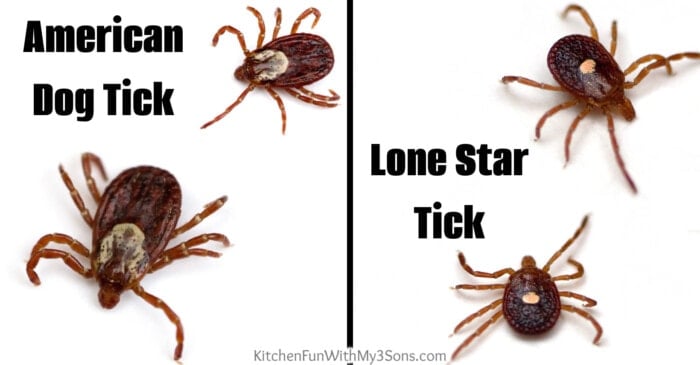
Common Species of Ticks on Dogs that Cause Disease
- Deer or Black-legged tick: These ticks are a reddish-brown color with a dark brown or black shield-like space between their pinchers/body. They are commonly found in Midwest and eastern United States. Along wooded trails during the spring, early summer, and sometimes fall. These ticks are most known for transmitting diseases like Lyme disease, Ehrlichia, Anaplasma, and Powassan Virus.
- Brown Dog tick (kennel tick): This tick is a reddish-brown color that normally attaches itself to the backs of dog’s ears and their toes. They are less likely to attach to humans. These are most commonly found in the United States and Canada. They are normally hiding in cracks, radiators, rugs, furniture, drapes, and walls. These ticks can transmit Ehrlichia and since they are indoors, they can establish in colder climates. Although, they are tropical and can’t survive long.
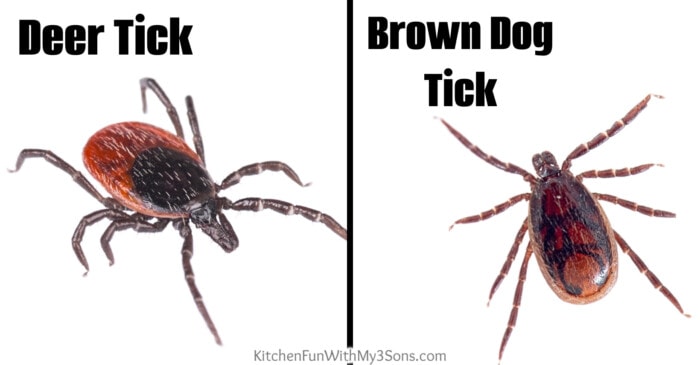
Another Species Of Ticks
- Long horned tick: These are reddish-brown ticks that are commonly found in these 11 states. (Arkansas, Connecticut, Delaware, Kentucky, Maryland, North Carolina, New York, Pennsylvania, Tennessee, Virginia, and West Virginia). It is not clear whether or not these ticks can transmit diseases. But, they are known for causing severe fever and thrombocytopenia syndrome virus (SFTSV) to humans. They are also extremely unique as females can produce and lay eggs without having to mate.
Life Stages of a Tick
- Egg – Female ticks can lay between 3,000 to 6,000 eggs. Once they find a host and gorge themselves on blood, they mate quickly after. Male ticks will typically die right after mating with one or more females, but they can live for several more months. Once the eggs are laid, the females will die making their life cycle between 2 months to 3 years depending on the type of tick. This also depends on the environment and weather changes.
- Larva (Six-legged) – These are called seed ticks. They will develop molts which will then grow into a nymph. Some species of unfed larva can live up to 540 days without food.
- Nymph (Eight-Legged) – Nymph’s will latch onto a host and feed to eventually molt as well and grow into an adult. Some species of Nymph’s can live up to 584 days without food. Larvae and nymphs will feed on smaller rodents and once they grow into adults, they will begin to feed on bigger animals.
- Adult – Male and females will then continue to feed, mate, and lay eggs to reproduce and continue their cycle of life. Some species of adult ticks can live up to 2 years without food.
How Do Ticks Find Their Host?
Ticks hide and wait for their host in tall or short grasses and shrubs. Once they are passed and brushed by a moving person or animal, they will quickly let go of the plants and latch onto the host. This is also known as questing. They can only crawl towards the host; they cannot fly or jump their way to you or your pet. Some will go several feet just to find their host. Ticks are most active during the warmer months but can hold up during winter months if the temperature in the ground is above 32 degrees Fahrenheit.
It’s important to check your dog thoroughly for ticks. Also to identify what kind of bug bites are on your dog.
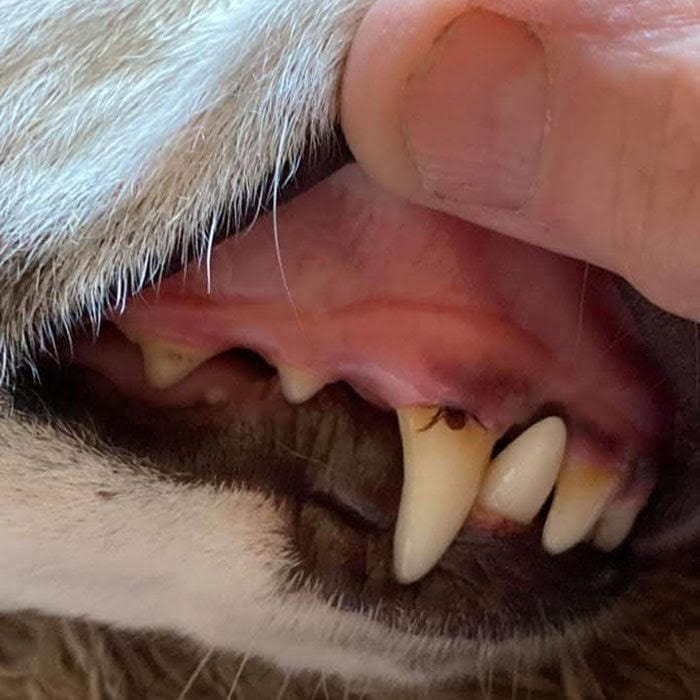
image via Reddit
How To Prevent, Remove, and Treat Ticks on Dogs?
Preventing Ticks on Dogs
You can find various preventatives over the counter or through your veterinarian. Some can be applied on the skin of the neck for external parasites. Some options include Frontline Plus® (US Only) and Advantix®, Bravecto® (applied topically and lasts 3 months), Nexgard® (chewable) and Simparica® (given monthly). It is always best to talk to your veterinarian with anything that involves your pets. It is always important to scan yourself and pets for ticks if you find yourself in common areas they are found. You can do a full body check on pets by running your hands or a comb through their fur and checking for lumps or bumps. Check especially in-between toes, behind and inside ears, torso, and legs. Be sure to vacuum routinely indoors, wash pet bedding, and mow tall grass.
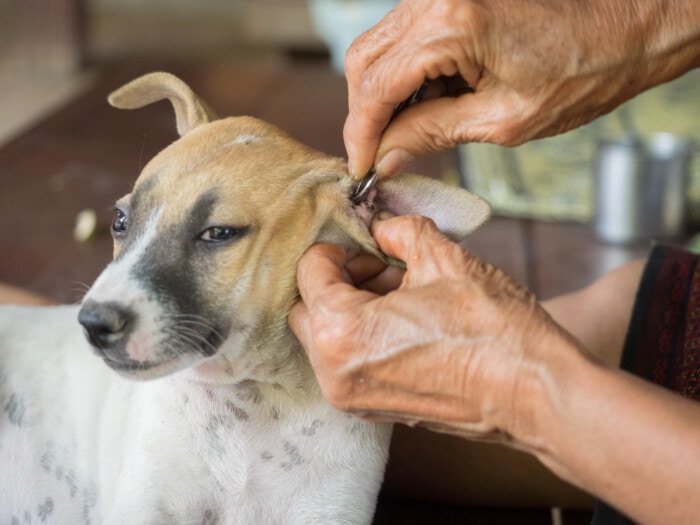
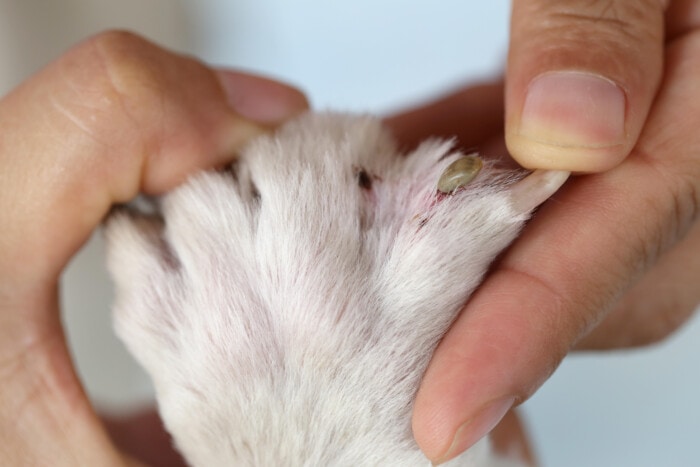
Removing Ticks On Dogs
You will need fine-tipped tweezers and latex gloves which will protect you from contracting any diseases or viruses. If you must use your hands/fingers, make sure to shield them using a paper towel or tissue (Especially important for those removing ticks from pets). Use the tweezers to grasp the tick as closely as possible to the skin to reduce the chance of the head detaching from the body. Steadily pull the tick straight out with even pressure. If the tick is being tough, continue to apply a steady pressure for a minute or two while slowly pulling until it releases. Twisting or jerking while removing can cause the head to detach and still be imbedded in the skin. There are useful tools like Tick Tweezers that can make the removing process easier.
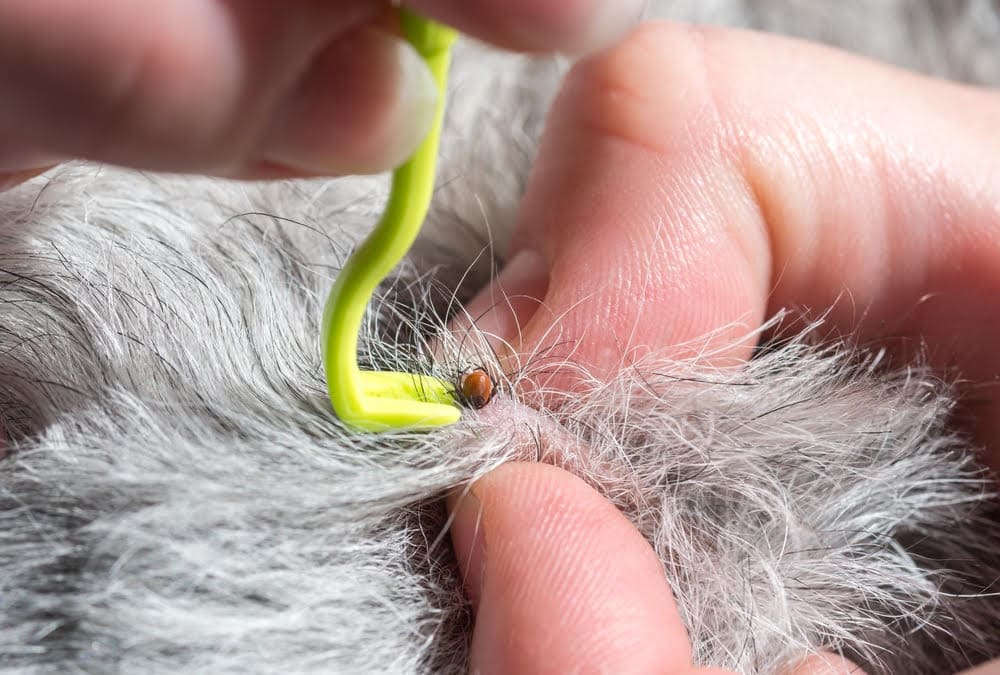
Treatment
Once the tick has been removed, you will need to immediately disinfect the area that was bitten. Make sure your hands are washed with soap and hot water. You can apply Vaseline/petroleum jelly or grease. Some people may suggest burning the tick off with a hot match, but this is ineffective and can cause the tick to salivate and increase chances of disease.
Tick Disposal: Place in rubbing alcohol to preserve it in case you need to identify it. Make sure to label with important information like time and place the bite occurred. This will help your veterinarian or doctor if a rash or other symptoms begin to appear (especially with cases of Lyme disease)
In Conclusion
It is a must to prevent and routinely check your pets for ticks to avoid any chance of disease or virus they could contract from ticks. Even though it is scary that they can contract viruses from ticks. If you catch the tick early and contact your doctor/vet immediately when symptoms appear, then you have a higher chance of getting you or your pet treatment faster making it more effective in getting rid of the disease.
[ratemypost]
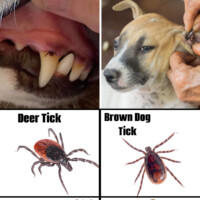




Leave a Review!
We LOVE hearing from you! Submit your question or comment here.
Your email address will not be published.